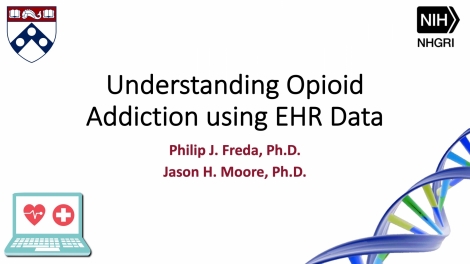Philip Freda
Understanding Opioid Addiction using EHR Data
Abstract
Opioid use disorder (OUD) creates significant public health and economic burdens worldwide. Therefore, understanding the risk factors that lead to the development of OUD is fundamental to reducing both its prevalence and its impact. Significant sources of OUD risk include co-occurring lifetime and current diagnoses of both psychiatric disorders, primarily mood disorders, and other substance use disorders, and unique and shared genetic factors. Although there appears to be pleiotropy between OUD and both mood and substance use disorders, this aspect of OUD risk is poorly understood. This research describes a protocol to understand the risks of developing OUD using electronic health record (EHR) data from a population of individuals assigned ICD codes for OUD. Furthermore, we provide a system and results to detect structure found in this population based upon demographic information, medications, and medical procedures. Our goal is to improve rational opioid prescribing and OUD treatment and to improve efforts to prevent the disorder.
Keywords
opioids, psychiatric, comorbidity, clustering, OUD risk assessmentCommenting is now closed.
About Us
To understand health and disease today, we need new thinking and novel science —the kind we create when multiple disciplines work together from the ground up. That is why this department has put forward a bold vision in population-health science: a single academic home for biostatistics, epidemiology and informatics.
© 2023 Trustees of the University of Pennsylvania. All rights reserved.. | Disclaimer



